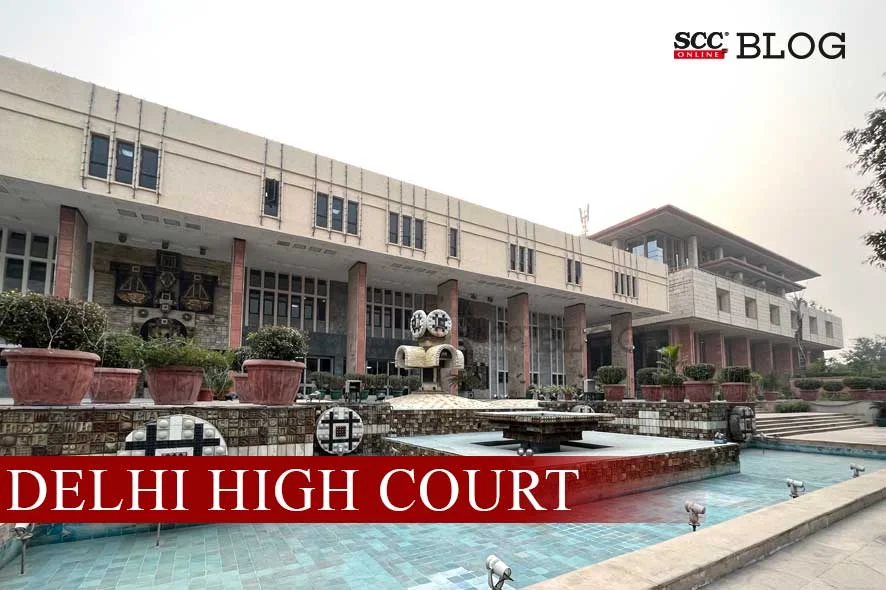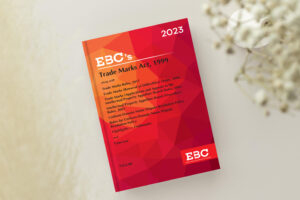Delhi High Court: In a case wherein a rectification application was filed by petitioner, Rong Thai International Group Co. Ltd. invoking Section 47(1)(b) of Trade Marks Act, 1999 (‘the Act’) to seek cancellation of the mark ‘BAOJI’, registered in Class 25 in favour of Respondent 1, Ena Footwear Pvt. Ltd. on the ground of non-use, Sanjeev Narula, J.*, dismissed the petition and held that a mark’s removal for non-use required clear, unequivocal evidence of abandonment, which was not present in the case.
Background
Petitioner, a company incorporated in Thailand, was engaged in the business of, inter alia, manufacture and distribution of footwear and other related goods. The products were sold under the trade mark/logo ![]() in various countries, as well as through online marketplaces. Petitioner owned a domain name , accessible for public view besides domain names and . In India, petitioner had registered trade mark ‘BAOJI’/‘
in various countries, as well as through online marketplaces. Petitioner owned a domain name , accessible for public view besides domain names and . In India, petitioner had registered trade mark ‘BAOJI’/‘![]() ’ with the Trade Marks Registry in Class 18 for leather and imitations of leather goods. Petitioner sought to register their mark under Class 25 for footwear but the application was rejected due to an already existing registration for the impugned mark ‘BAOJI’ in Class 25 of Respondent 1.
’ with the Trade Marks Registry in Class 18 for leather and imitations of leather goods. Petitioner sought to register their mark under Class 25 for footwear but the application was rejected due to an already existing registration for the impugned mark ‘BAOJI’ in Class 25 of Respondent 1.
Petitioner contended that they learnt about the existing registration for the impugned mark on 20-07-2017 after they received the examination report of the Registrar dated 01-07-2016. Petitioner sought cancellation of the mark on the ground of non-use in accordance with Section 47(1)(b) of the Act. Petitioner relied on investigation report of independent investigator and alleged statement of director of Respondent 1 and contended that Respondent 1 was not using the impugned mark ‘BAOJI’. Petitioner contended that since more than five years lapsed since the date of registration with no bona fide use by Respondent 1, the impugned mark was liable to be removed from the trade mark register in accordance with Section 47(1)(b) of the Act.
Respondent 1 submitted that they extensively used the impugned mark in respect of footwear related goods since the year 2000 and even sold such products through online marketplaces. Respondent 1 submitted that the impugned mark was granted registration on 26-12-2013, effected from 12-02-2007. It was further submitted that the application was filed on 10-08-2020 and for removal of the impugned mark, non-use for a continuous period of five years up to three months prior to the date of filing the application had to be proved.
Analysis, Law, and Decision
The Court opined that Section 47(1)(b) of the Act enabled removal of a trade mark from the register if it had not been used bona fide for a continuous period of five years or longer. The Court opined that the period of non-use for a trade mark for cancellation had to be calculated from the date it was ‘actually entered in the register’. It was further opined that the endpoint for the calculation defined to be ‘three months before the date of the application’ for removal. The Court further opined that the critical date for assessing trade mark’s use was three months prior to filing the application for its removal.
The Court further opined that against the ground of cancellation specified under Section 47(1)(b) of the Act, a ‘grace period’ during the first five years following its entry into register provided to protect it from challenges based on non-use and after that period the trade mark was vulnerable for removal due to non-use. The Court further opined that a challenge for removal must prove a continuous non-use for at least five years from the date of entry into the register and up to three months before the application and any bona fide use of the trade mark could interrupt the continuity of non-use and invalidate the application for cancellation.
The Court noted that the impugned mark was registered in the favour of Respondent 1 on 26-12-2013 and the application for rectification was filed on 10-08-2020. The Court opined that the date for assessing the use of mark was set as 10-05-2020. The Court further opined that the sale invoices submitted clearly demonstrated Respondent 1 had consistently used the impugned mark from 2012 till 2022.
The Court dismissed the petition for removal of the impugned mark on ground of non-use and held that findings rendered in the investigation report qua non-use of impugned mark stood disproved and petitioner’s claim of non-use of impugned mark was not substantiated. The Court further held that a mark’s removal for non-use required clear, unequivocal evidence of abandonment, which was not present in this case.
[Rong Thai International Group Co. Ltd. v. Ena Footwear (P) Ltd., 2024 SCC OnLine Del 66, decided on: 05-01-2024]
*Judgment Authored by: Justice Sanjeev Narula
Advocates who appeared in this case :
For the Petitioner: Aparna Jain and Ishaan Berry, Advocates
For the Respondents: Anshul Goel, Ashok Goel and Ranjeev Kumar, Advocates








